Electricity_Basics_Part_4__Resistance.pdf
Transcript:
[0m:4s] Hi I'm Josh Bloom, welcome to another video in the RSP Supply education series. If you find that these videos are helpful to you, it certainly helps us out if you could give us a big thumbs up and subscribe to our channel.
[0m:16s] In today's video we are going to continue on in our brief series in which we are talking about the basics of electricity.
[0m:24s] In our last video, we talked about current. If you remember in that video, we said that current is simply the flow of electrons or electrical charge through a conductor in a circuit. We also discussed how the amount of current is directly related to the amount of voltage or electrical pressure that is present in the circuit. We also mentioned that the amount of electrical charge and total resistance can also impact how much current is present in the circuit as well.
[0m:54s] So, simply put one of these principles cannot be changed without impacting another principle in some way.
[1m:3s] In that video, we also referred back to the water analogy to help us better understand the relationship between current, voltage, and electrical charge.
[1m:13s] If you have not already seen that video, we will link it in the description below so that you might better understand the concepts we will be discussing in today's video.
[1m:22s] For the purpose of today's video, we will be talking about another one of the three principles that we have previously mentioned:
[1m:29s] resistance.
[1m:31s] Electrical resistance is simply a way to quantify the ability electrons will have to flow through a given conductor. Or in other words, it is the measurement of how easily current can flow through wire or any other type of conductor.
[1m:49s] As mentioned in our other videos, current, or the flow of electrons, is directly impacted by the amount of charge and the amount of voltage in a circuit. Because of this, we know that as we increase the voltage, we can directly impact the current level in a circuit.
[2m:8s] Resistance can also directly impact the amount of current that can flow through a circuit.
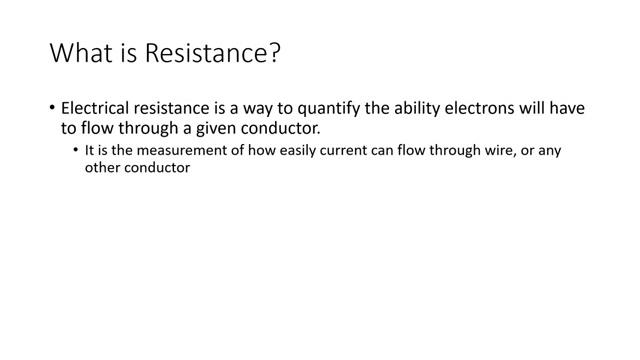
[2m:15s] If the resistance is increased in a circuit, the amount of current will decrease regardless of the pressure or voltage that is being applied.
[2m:27s] Resistance is measured in ohms and is represented by the Greek symbol for Omega.
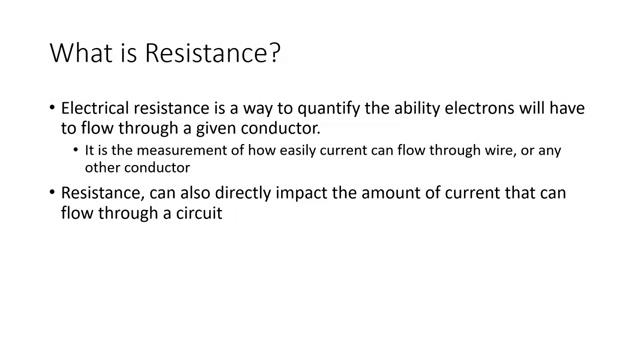
[2m:35s] So now that we know that voltage, current and resistance all play a role in how electrons can flow through a circuit,
[2m:43s] it is how each of these principles are manipulated that will directly impact how electricity behaves so that it will do what we want it to.
[2m:53s] If we refer back to our analogy in which we represent electricity as water and how it behaves as it flows through a pipe, we can better illustrate how resistance plays a large role in current or the flow of electrons.
[3m:10s] To recap:
[3m:11s] we know that electrical charge is represented in this analogy by the total amount of water in the pipe.

[3m:17s] We also know that voltage is represented by the water pressure in the pipe.
[3m:22s] So, as water flows, which is represented by electrical current,
[3m:27s] the amount of water will decrease, and the total water pressure will also begin to decrease.
[3m:33s] With that said, we know that current is affected by the amount of pressure that is being applied in the pipe, or the amount of voltage in a circuit.
[3m:43s] So, now let's look at a scenario where there are two different pipes with the same amount of water and the same amount of water pressure being applied,
[3m:54s] but one of those pipes is larger in diameter than the other.
[4m:0s] In this scenario, the pressure is the same at the end of the pipe,
[4m:6s] but the larger pipe is allowing more water to flow through it.
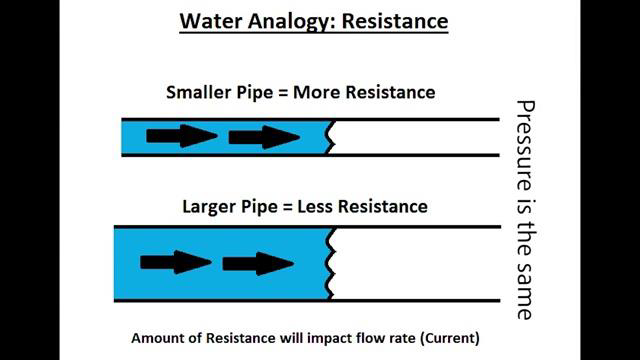
[4m:11s] So, in regards to electricity, this would be represented as two different circuits
[4m:17s] with the same electrical charge and voltage. However, in one circuit, there would be a larger conductor or larger diameter wire that was being used.
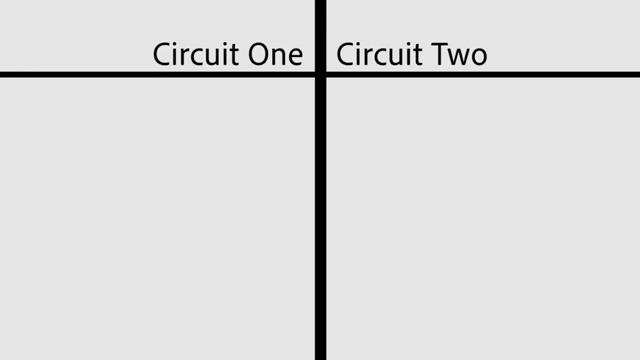
[4m:28s] The circuit with the larger diameter conductor would have less resistance across it, therefore would allow more current to flow. The circuit with the smaller diameter conductor would allow less current to flow through it. So what happens when we need to have the same amount of current passing through each conductor?
[4m:53s] Let's look at the water analogy again to better illustrate this scenario.
[4m:58s] In order to make sure that the same amount of water is flowing through each pipe, even though one pipe is a smaller diameter,
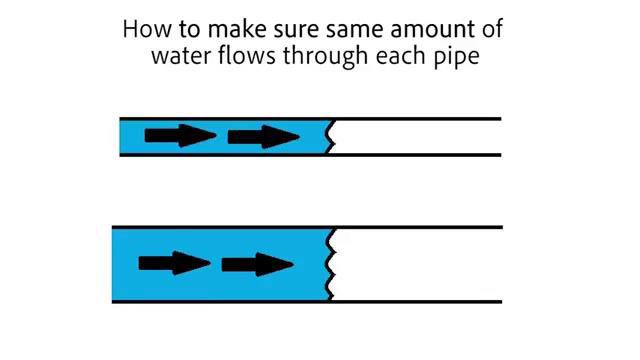
[5m:7s] one of two things will need to occur.
[5m:10s] Either you will have to increase the water pressure that is being applied,
[5m:15s] or you would have to increase the size of your pipe. In electrical terms, this would mean that you would need to either increase the voltage
[5m:23s] or decrease the resistance.
[5m:25s] One thing to keep in mind:
[5m:28s] if we increase the pressure or the voltage through a smaller wire,
[5m:33s] with more resistance, it will increase the heat that is generated on that wire because of the electrical friction that is created from this increased pressure or voltage.
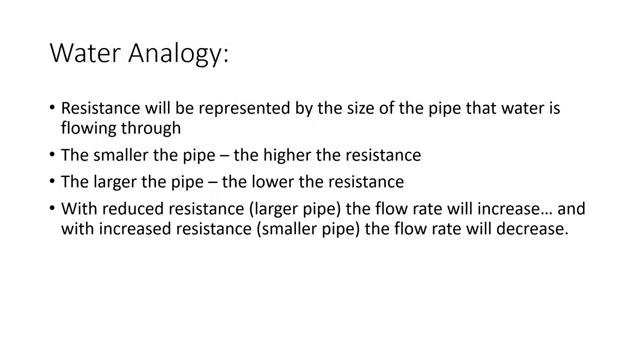
[5m:45s] In short,
[5m:47s] resistance is the measurement of how easily current can flow through a wire or any other conductor.
[5m:54s] Also resistance directly impacts the amount of current that can flow through a conductor in any given circuit.
[6m:3s] So, voltage, current and resistance all impact each other.
[6m:9s] And it is this correlation between these three principles that we will discuss in our next video.
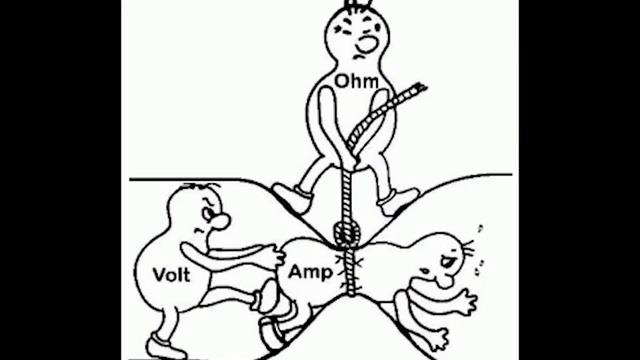
[6m:16s] For a full line of industrial electrical equipment and thousands of other products, please go to our website. For more information or other educational videos, go to RSPSupply.com, the Internet's top source for industrial hardware. Also, don't forget: like and subscribe.




